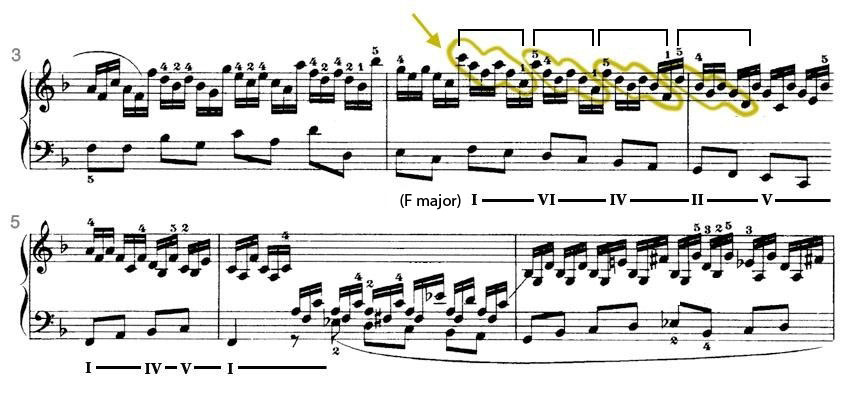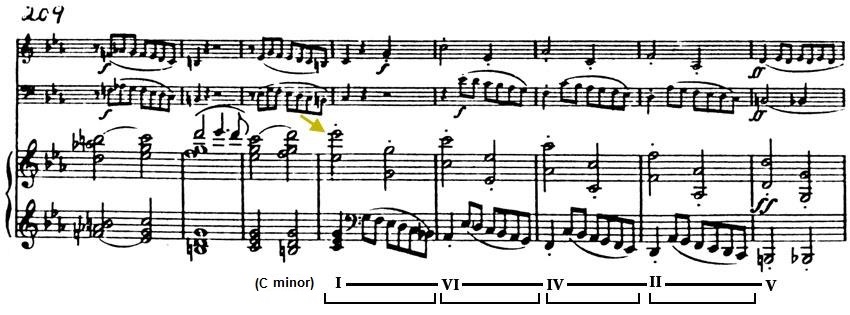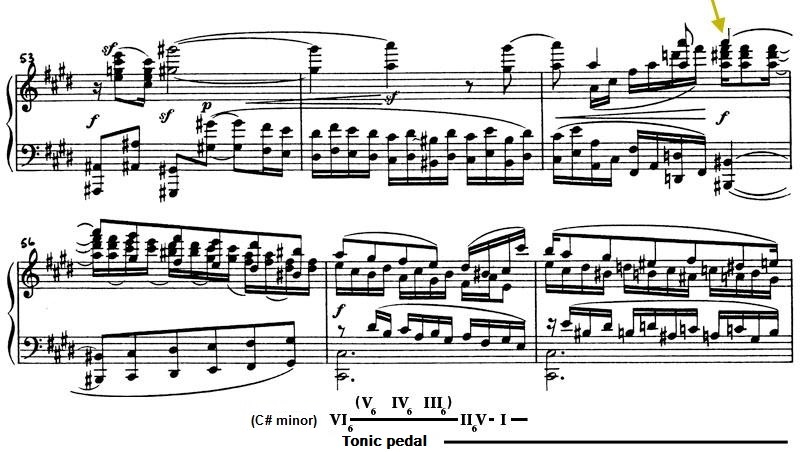1.3 - A practice of analysis in the tonal harmonic discourse from Bach to Wagner ||
A) FORMULAS - 1. Definition of
a formula ::
2. Presentation of
the little catalogue of harmonic vocabulary ::
3. User's guide to
the little catalogue and various instructions ::
4. Examples
illustrating the little catalogue (motifs: 1, 2, 3, 4, 5, 6a, 6b, 7, 8, 9, 10, 11, 12, 13, 14, 15, 16, 17, 18, 19, 20, motifs in combination)
B) SEQUENCES - 1. Definition of a
harmonic sequence :: 2. Classifying
sequences :: 3. Melodic
formulations: characteristic motifs :: 4. The tonal
nature of the harmonic sequence :: 5.The tripartite
structure of the harmonic sequence :: 6. A
modulating sequence or not? :: 7. Diversification
of harmonic content :: 8. The harmonic
sequence as a place of subversion :: 9. Conclusion
B) Sequences
Always
this mania to organize. In order to be able to identify. By ear and by
sight. So that the ear becomes an eye and the eye becomes an ear.
Nothing
is better suited to this end than the harmonic sequence. A purely
symmetrical mechanism that is intended to be heard as such, the harmonic sequence
is found on every other page of the tonal discourse from Bach to
Wagner. We will not only classify this phenomenon, but also scrutinize it
as a privileged bearer of tonal patterns and behaviours.

1. DEFINITION OF A HARMONIC SEQUENCE
What is a tonal harmonic sequence?
It is an immediate, systematic reproduction (R) at a higher or lower
pitch level in the tonal scale of a model (M) corresponding to a
group of at least two harmonic terms (functions), usually endowed with its own distinctive characteristic melodic-rhythmic figuration:
Example 373 : J. Brahms : Etude for piano, vol. II, no 5, based on the Chaconne by
J.S. Bach, Partita no 2, BWV 1004, for solo violin (mm 49-65)
Type 1 sequence

Example 374 : F. Chopin : Etude, op. 10, no 12 (mm 29-33)
Type 3 sequence

Example 375 : R. Wagner : Tristan und Isolde, Act III, Scene 2 (mm 157-169)
Type 10 sequence

The
types of the sequences that appear in the musical examples are indicated every time,
when applicable, in order to permit the reader to come back to examine them
once the proposed classification procedure has been learned. |
Our definition requires further precision. First, we exclude sequences
in which the model consists of only a single chord, even if the melodic and
rhythmic configurations are symmetrically reproduced. In such a case,
we consider that there is no real harmonic model, and therefore
classify it as a melodic sequence. From the perspective of the tonal
discourse - by definition a hierarchical discourse - a harmonic entity
must, if it is to have meaning, designate the tonic to which it is
related and, in order to accomplish this, must include at least two
functions (implicit or explict) including the dominant. An isolated
chord, even if it articulates a clearly differentiated structure - such
as that of a major chord for example, - represents an entity without
significance in this regard.
This situation occurs most
frequently when a harmonic formula - for example, I - VI - IV - II - V
- I - is employed in such a way that the treatment of the first chord
is repeated for each subsequent chord:
Example 376 : J.S. Bach : The Well-Tempered Clavier, vol. I, Prelude no 6, BWV 851 (mm 4-6)

Example 377 : L.V. Beethoven : Trio, op. 1, no 3, IV (mm 212-216)

We
also find this type of sequence with a single chord in the model in the
case of a paralellism of sixth chords (or of fifth chords). In this
situation, if the context lends itself to such an interpretation,
we suggest, as an analytical procedure, attributing a harmonic
function only to the first and last chords of the chain, thus
considering the chords between as ornamental (from this perspective,
these intermediate chords result from a series of
simulataneous passing notes):
Example 378 : W.A. Mozart : Piano sonata, K. 279 (289), III (mm 34-38)

Example 379 : L.V. Beethoven : Symphony no 4, op. 60, I, Allegro vivace (mm 43-53)

Example 380 : J. Brahms : Symphony no 1, op. 68, II, Andante sostenuto (mm 55-57)


On
the contrary, we accept to consider as a harmonic sequence a fragment
of the discourse
where the harmonic model alone is repeated (transposed) while the
rhythmic and melodic configurations are modified. This extension allows
for explanation of many harmonic gestures which otherwise often
resist an
analysis from the perspective that considers the
circle of fifths as the foundational structure of the tonal
discourse:
Example 381 : J.S. Bach : Chorale no 41, Was mein Gott will, das, BWV 65, (mm 1-5)
a) Type 4 sequence and b) type 9 sequence

Example 382 : R. Schumann : Fantasy, op. 17, III (mm 4-5)
Type 4 sequence

Example 383 : G. Verdi : Aida, Act II, Introduction, Allegro giusto (mm 9-11)
Type 4 sequence

Finally, even a single reproduction of the model is enough to form a sequence (revisit example 374).
Exceptionally,
in order to validate a type 1 sequence the text must exhibit
symmetrical organization on the melodic and rhythmic planes as well.
This special clause is due to the fact that portions of the
circle of fifths (for
example, VI - II - V - I) appear with such frequency independent of any
explicit sequential
treatement.
2. CLASSIFYING SEQUENCES
|
